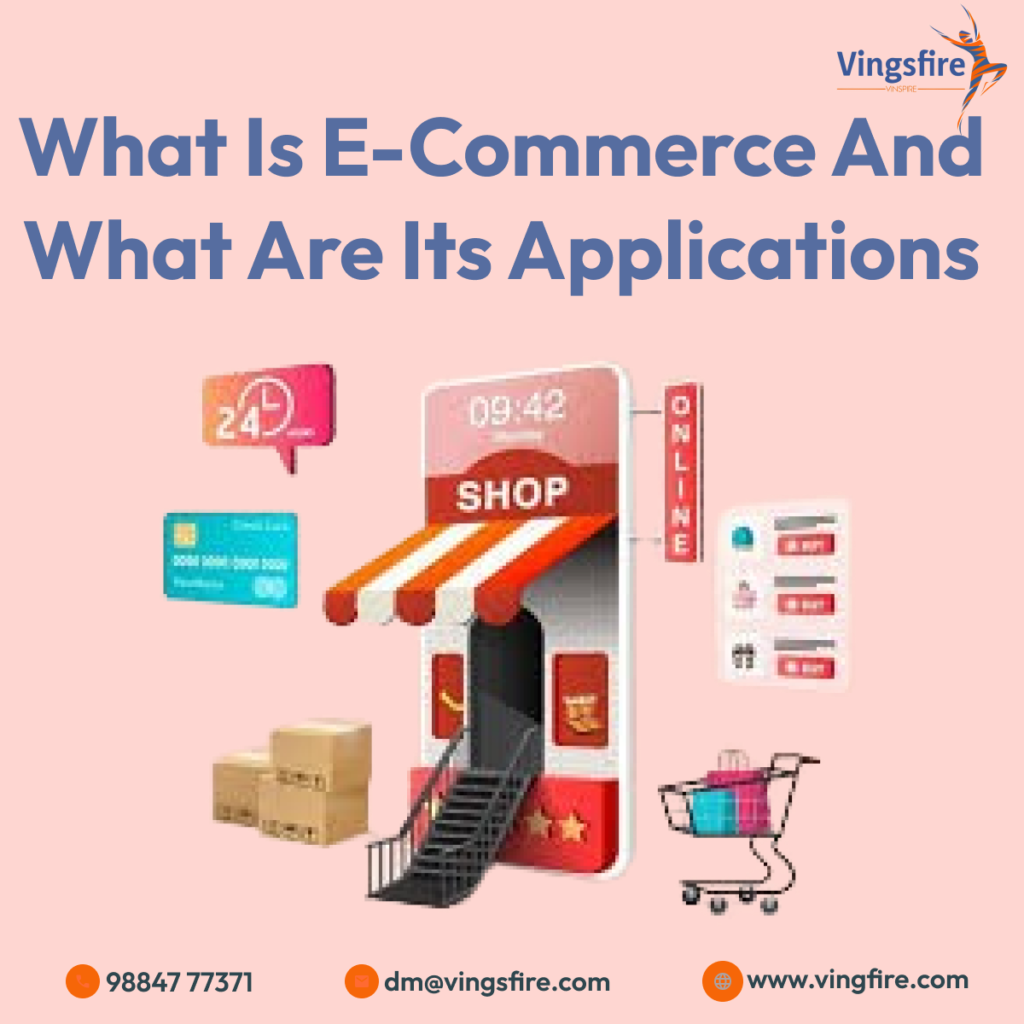Introduction :
ECommerce define, short for electronic commerce, has revolutionized the way we conduct business, reshaping the global marketplace. In this blog post, we’ll delve into the intricacies of e-commerce, exploring its definition, tracing its historical roots, categorizing its various types, examining real-world examples, and uncovering interesting facts about its impact on the business landscape.
Learn More About Vingsfire:-
1.LINKEDIN
2.FACEBOOK
Definition of E-Commerce :
E-commerce refers to the buying and selling of goods and services over the internet. It involves electronic transactions, online payments, and the exchange of data between buyers and sellers. E-commerce eliminates geographical barriers, enabling businesses to reach a global audience. This digital evolution has transformed traditional commerce, fostering a more efficient and accessible marketplace.
Historical Evolution :
The concept of e-commerce dates back to the 1960s when electronic data interchange (EDI) emerged, allowing businesses to exchange documents electronically. However, the true catalyst for e-commerce’s explosive growth occurred in the 1990s with the rise of the internet. The development of secure online payment systems and the establishment of e-commerce giants like Amazon and eBay paved the way for the widespread adoption of online shopping.
Types of E-Commerce :
E-commerce is a diverse field with various models catering to different business needs. Business-to-Consumer (B2C), Business-to-Business (B2B), Consumer-to-Consumer (C2C), and Consumer-to-Business (C2B) are the primary models. B2C involves businesses selling directly to consumers, while B2B focuses on transactions between businesses. C2C refers to consumer-to-consumer transactions, often facilitated by online platforms, and C2B involves consumers selling products or services to businesses & ecommerce define ecommerce define.
Examples of Successful E-Commerce Platforms :
Several e-commerce platforms have become synonymous with online shopping. Amazon, founded in 1994, started as an online bookstore and has since evolved into a global marketplace offering a vast array of products. Alibaba, a Chinese e-commerce giant, connects businesses globally, emphasizing the B2B model. Additionally, platforms like eBay (C2C) and Shopify (B2B and B2C) have played pivotal roles in shaping the e-commerce landscape.
Interesting Facts about E-Commerce :
E-commerce has witnessed staggering growth, with global online sales reaching trillions of dollars annually. Mobile commerce (m-commerce) has emerged as a significant subset, enabling users to make purchases via smartphones and tablets. The rise of social commerce, where social media platforms integrate shopping features, has further blurred the lines between online shopping and social interaction.
Conclusion :
In conclusion, ecommerce define has evolved into a cornerstone of modern business, transcending geographical constraints and redefining how transactions occur. Understanding its definition, tracing its historical trajectory, exploring its diverse types, examining successful examples, and acknowledging its impact through interesting facts are crucial steps in appreciating the immense influence e-commerce wields in today’s interconnected world. As we continue to embrace digital transformation, the future of e-commerce promises continued innovation and global connectivity.












